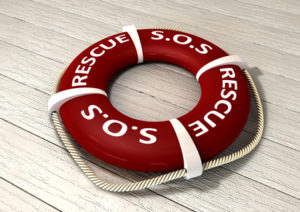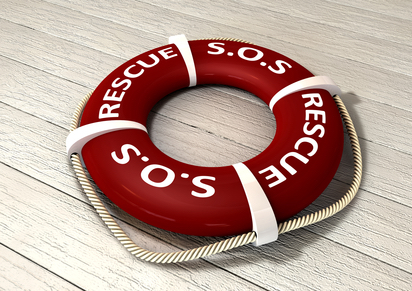
Enthusiasm for using ketamine to treat depression has been growing. The interest in the fast action effects of ketamine for treatment-resistant depression began with the publication of a study by Zarate et al. in 2006 that found “Subjects receiving ketamine showed significant improvement in depression compared with subjects receiving placebo within 110 minutes after injection.” Since then, dozens of studies have been done and thousands of people have been treated for depression off label with ketamine. Now the American Psychiatric Association has a ketamine task force and is seriously considering an endorsement of ketamine for treatment-resistant depression.
An NPR story featured psychiatrist David Feifel’s work in treating depression with ketamine. Feifel began treating people with low dose ketamine in 2010. After reading the papers on ketamine, he said he was electrified. People were getting better in hours. “It became clear to me that the future of psychiatry was going to include ketamine, or derivatives of ketamine, or the mechanism of action in some way.”
He said it was hard for him to take the “wait and see” approach suggested by other psychiatrists when people are desperate for help. It didn’t make sense to him. Sara Solovitch, writing for The Washington Post, said some experts are calling it the most significant advance in mental health treatment in fifty years.
Ketamine has been around since the 1960s. It is regularly used as an ER anesthetic because it can rapidly stop pain without affecting vital functions like breathing. It’s often the go-to painkiller for children who come to the ER, say with a broken bone. It’s used in veterinary medicine and is an important tool in burn centers. It’s also been used as date-rape drug, because of some of the self-same properties that make it an attractive ER anesthetic. It will quickly numb and render someone immobile.
A single dose of ketamine costs under $2. The drug is easily available in any pharmacy; and doctors are free to prescribe it for off-label use. But ketamine treatment for depression is expensive. Dr. Feifel charges $500 for an injection and $1,000 for an intravenous infusion. The high cost is attributed by practioners to the medical monitoring and IV equipment required during an infusion.
It isn’t an approved depression treatment, so the costs are out-of-pocket, placing it out-of-reach for many people. But clinics are going up everywhere. A directory found 19 different centers in the US as of the beginning of February, in 2016. Dr. Feifel is afraid something will happen to a depressed patient at one of these unregulated clinics that could set back efforts to make the drug more widely available.
Sara Solovich reported there a growing number of academic medical centers that are offering ketamine treatments off-label for severe depression. These medical centers include: Yale University, the University of California at San Diego, the Mayo Clinic and the Cleveland Clinic. A San Francisco psychiatrist, Alison McInnes, thinks this is the next big thing in psychiatry. Psychiatry has “run out of gas” in trying to help depressed patients. “There is a significant number of people who don’t respond to antidepressants, and we’ve had nothing to offer them other than cognitive behavior therapy, electroshock therapy and transcranial stimulation.”
Dr. McInnes reported a 60% success rate for people with treatment-resistant depression who try ketamine. Dr. McInnes is also a member of the APA’s ketamine task force. She expects the APA to support ketamine treatment in 2016.
Ryan, Marta and Koek did a literature review on ketamine as a treatment for depression in a 2014 issue of the International Journal of Transpersonal Studies, “Ketamine and Depression: A Review.” They acknowledged that the largest challenge with ketamine was extending its benefit for the longer term. Repeated infusions of ketamine showed some promise, but it is far from clear what the optimum dose, frequency and number of infusions should be. “It also worth noting that some patients do not benefit from ketamine, despite multiple treatments.”
Ready for the drawbacks? “Even low-dose ketamine infusion can cause intense hallucinations.” Patients experience a kind of lucid dreaming or dissociative state where they lose track of time and have out-of-body experiences. Many people enjoy it; but others don’t. The treatment effects are often temporary. Dr. Feifel reported one patient whose depression remission would begin to fade within twenty-four hours. With others, the remission can be longer; even weeks. The fleeting remission effect means that many patients return for booster infusions. A business executive from Seattle flies back-and-forth to New York for bimonthly infusions. Sometimes his remission periods will last six months.
Gerald Sanacora, the director of the Yale Depression Research Program, said ketamine infusion is an extremely important treatment. His concern is that people may begin using it as a first-line treatment—before CBT (cognitive behavioral therapy) or antidepressants like Prozac. “Maybe someday it will be a first-line treatment. But we’re not there yet.”
It’s a medication that can have big changes in heart rate and blood pressure. There are so many unknowns, I’m not sure it should be used more widely till we understand its long-term benefits and risks.
There isn’t a registry yet for tracking ketamine patients treated for depression. So the number of people treated, the frequency of those treatments, the dosage levels, follow up care—and importantly—adverse effects from ketamine treatment aren’t known. Carlos Zarate, the NIMH’s chief of neurobiology and treatment of mood disorders, said: “We clearly need more standardization in its use.” In his opinion, it should still be used in a research setting or a highly specialized clinic.
There also seems to be a turf war or sorts brewing. Ketamine was once almost exclusively a drug known to anesthesiologists. Psychiatrists are now saying that with the use of ketamine for depression growing, it should be left for psychiatrists to prescribe. David Feifel said:
The bottom line is you’re treating depression. . . . And this isn’t garden-variety depression. The people coming in for ketamine are people who have the toughest, potentially most dangerous depressions. I think it’s a disaster if anesthesiologists feel competent to monitor these patients. Many of them have bipolar disorder and are in danger of becoming manic. My question [to anesthesiologists] is: “Do you feel comfortable that you can pick up mania?”
Six of the providers in the above-linked directory are specialists in anesthesiology. Six are psychiatric specialists. The rest are a mixture of specialists in emergency medicine, neurology, internal medicine and even family medicine. Enrique Abreu, A Portland Oregon anesthesiologist who began treating depressed patients with ketamine in 2012, said: “Most anesthesiologists don’t do mental health, and there’s no way a psychiatrist feels comfortable putting an IV in someone’s arm.”
Ketamine in larger doses than are being used in the above discussed depression research is a club drug known as “Special K,” “K,” or Ket.” It is a Schedule III Controlled Substance, meaning it is classified as having an addictive potential. Current depression research has not indicated dependence as an adverse effect, likely because of the low doses currently being used. When used with other sedating drugs like alcohol, the potential of slowing or shutting down the central nervous system are increased. And it is possible to overdose on ketamine. While some clinicians like Drs. Feifel and McInnes would like to see ketamine treatment revolutionize the psychiatric treatment of depression, caution in waiting for the results of further research seems advisable.
Unfortunately, I don’t think that will happen. Psychiatric treatment of depression is in crisis. Even the articles and researchers cited here seemed to acknowledge this. Dr. McInnes said psychiatry has “run out of gas” in trying to help depressed patients. Dr. Fiefel said he found it hard to “wait and see” what further research found regarding ketamine, when so many people were desperate for help.
Pharmaceutical companies stopped doing research into new antidepressants. The chemical imbalance theory of depression is now referred to as more of an urban myth than a true description. Pharma and psychiatry need an antidepressant savior and it seems they hope it will be ketamine.





